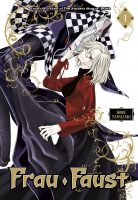My News and Reviews
I was running a little behind my intended schedule last week (and today for that matter–this seems to be somewhat par for the course lately), but over the weekend I was finally able to post my review of the ninth omnibus of Vinland Saga, an award-winning historical manga by Makoto Yukimura which has become one of my favorite series currently being released in English. Last week I also attend a talk by Hiroshi Yoshioka, a professor at Kyoto University’s Kokoro Research Center, called Hiroshima, Fukushima, and Beyond: Borders and Transgressions in Nuclear Imagination. Yoshioka’s research addresses the portrayal of nuclear power within popular culture, whether that be manga like Keiji Nakazawa’s Barefoot Gen, Sunao Katabuchi’s In This Corner of the World anime adaptation, other visual arts, or even Giant Baba’s “atomic drop” in professional wrestling. I won’t be doing a full write-up of the talk (although perhaps I should), but I did find it to be fascinating. A couple of other interesting things that I’ve come across recently include Ryan Holmberg’s two part article “Yokoyama Yuichi and Audiovisual Abstraction in Comics” as well as an edited version of a talk by Tyran Grillo, the translator working on the Legend of the Galactic Heroes novels, about the series and its author Yoshiki Tanaka.
Quick Takes
 Frau Faust, Volume 1 by Kore Yamazaki. The German legend of Faust, a scholar who sells his soul to the Devil in order to gain great knowledge and worldly delights, has had numerous interpretations over the centuries. (Considering my background in music, I’m personally most familiar with the various operatic and symphonic renditions of the tale.) Faust being the subject of a manga would be enough for me to take an immediate interest, but the fact that Frau Faust is by Yamazaki, the creator of The Ancient Magus’ Bride which I greatly enjoy, made it a series that I absolutely knew I needed to read. One volume in, not only am I intrigued, I am completely on board with Yamazaki’s reimagining of the classic tale. As can be gathered from the title, Faust in this case is a woman. Johanna is strikingly enigmatic, the complexity of her true nature slowly revealed over the course of the first volume of the manga. The pacing of Frau Faust is excellent. Plenty of mystery remains by the first volume’s end, but rather than the story feeling like it’s being unnecessarily drawn out, it simply makes me want to read more. The only real complaint I have about the manga, and it’s a relatively minor one at that, is Johanna’s eyeglasses which tend to inexplicably appear and disappear from one panel to the next and I can’t tell if it’s meant to be intentional or not.
Frau Faust, Volume 1 by Kore Yamazaki. The German legend of Faust, a scholar who sells his soul to the Devil in order to gain great knowledge and worldly delights, has had numerous interpretations over the centuries. (Considering my background in music, I’m personally most familiar with the various operatic and symphonic renditions of the tale.) Faust being the subject of a manga would be enough for me to take an immediate interest, but the fact that Frau Faust is by Yamazaki, the creator of The Ancient Magus’ Bride which I greatly enjoy, made it a series that I absolutely knew I needed to read. One volume in, not only am I intrigued, I am completely on board with Yamazaki’s reimagining of the classic tale. As can be gathered from the title, Faust in this case is a woman. Johanna is strikingly enigmatic, the complexity of her true nature slowly revealed over the course of the first volume of the manga. The pacing of Frau Faust is excellent. Plenty of mystery remains by the first volume’s end, but rather than the story feeling like it’s being unnecessarily drawn out, it simply makes me want to read more. The only real complaint I have about the manga, and it’s a relatively minor one at that, is Johanna’s eyeglasses which tend to inexplicably appear and disappear from one panel to the next and I can’t tell if it’s meant to be intentional or not.
 Kiss of the Rose Princess, Volumes 1-2 by Aya Shouoto. Since I’ve been enjoying The Demon Prince of Momochi House I’ve been making a point to try some of the other manga by Shouoto available in English. Sadly, I haven’t been nearly as taken with Kiss of the Rose Princess, one of Shouoto’s earlier series. I think that part of my lack of interest in the series stems from the fact that there’s not much of a plot even hinted at until the second volume. It’s almost as if the first volume, and much of the second, is devoted to a side quest before really getting to the meat of the story. Anise is a high school student who quite unexpectedly finds herself in command of a quartet of knights (who are also her classmates) that she can magically summon, a situation that hasn’t been fully explained. More than anything else, the setup comes across as a convenient excuse for the series’ heroine have a number of young men who are in some way bound to her if not vying for her attention. There’s nothing inherently wrong with that, but at this point most of the characters come across as “types” and any convincing romantic tension is nearly nonexistent. Everyone is very prettily drawn, however. Shouoto seems to be favoring silliness over seriousness in Kiss of the Rose Princess, which again isn’t necessarily bad, but a satisfying balance between the tones hasn’t been reached yet.
Kiss of the Rose Princess, Volumes 1-2 by Aya Shouoto. Since I’ve been enjoying The Demon Prince of Momochi House I’ve been making a point to try some of the other manga by Shouoto available in English. Sadly, I haven’t been nearly as taken with Kiss of the Rose Princess, one of Shouoto’s earlier series. I think that part of my lack of interest in the series stems from the fact that there’s not much of a plot even hinted at until the second volume. It’s almost as if the first volume, and much of the second, is devoted to a side quest before really getting to the meat of the story. Anise is a high school student who quite unexpectedly finds herself in command of a quartet of knights (who are also her classmates) that she can magically summon, a situation that hasn’t been fully explained. More than anything else, the setup comes across as a convenient excuse for the series’ heroine have a number of young men who are in some way bound to her if not vying for her attention. There’s nothing inherently wrong with that, but at this point most of the characters come across as “types” and any convincing romantic tension is nearly nonexistent. Everyone is very prettily drawn, however. Shouoto seems to be favoring silliness over seriousness in Kiss of the Rose Princess, which again isn’t necessarily bad, but a satisfying balance between the tones hasn’t been reached yet.
 Queen Emeraldas, Volume 2 by Leiji Matsumoto. In addition to being a classic manga, which I’m always happy to see more of in translation, I found the first half of Queen Emeraldas to be wonderfully engrossing, so I was looking forward to reading the conclusion of the series. One of the things that particularly appeals to me about the Queen Emeraldas is the mood that Matsumoto is able to create–the melancholic atmosphere of the manga as well as the portrayal of the great expanse and loneliness of the universe. (I also adore Matsumoto’s illustrations of space.) Emeraldas is a woman traveling the stars, her ship her only constant companion. However, her destiny still frequently crosses paths with those of others. Hiroshi Umino repeatedly finds himself drawn into her orbit as he tries to establish a life of freedom in space. The chapters of Queen Emeraldas are loosely-connected stories with the presence of Emeraldas as the uniting factor. She herself is frequently the narrator of the tales, but the focus is often on the follies and arrogance of the men she meets. I was actually hoping to learn more about Emeraldas and her personal story, but by the end of the series very little has been explicitly stated about her past. Even so, Emeraldas is a marvelously charismatic character, capable of great empathy and compassion but dedicated to justice.
Queen Emeraldas, Volume 2 by Leiji Matsumoto. In addition to being a classic manga, which I’m always happy to see more of in translation, I found the first half of Queen Emeraldas to be wonderfully engrossing, so I was looking forward to reading the conclusion of the series. One of the things that particularly appeals to me about the Queen Emeraldas is the mood that Matsumoto is able to create–the melancholic atmosphere of the manga as well as the portrayal of the great expanse and loneliness of the universe. (I also adore Matsumoto’s illustrations of space.) Emeraldas is a woman traveling the stars, her ship her only constant companion. However, her destiny still frequently crosses paths with those of others. Hiroshi Umino repeatedly finds himself drawn into her orbit as he tries to establish a life of freedom in space. The chapters of Queen Emeraldas are loosely-connected stories with the presence of Emeraldas as the uniting factor. She herself is frequently the narrator of the tales, but the focus is often on the follies and arrogance of the men she meets. I was actually hoping to learn more about Emeraldas and her personal story, but by the end of the series very little has been explicitly stated about her past. Even so, Emeraldas is a marvelously charismatic character, capable of great empathy and compassion but dedicated to justice.
